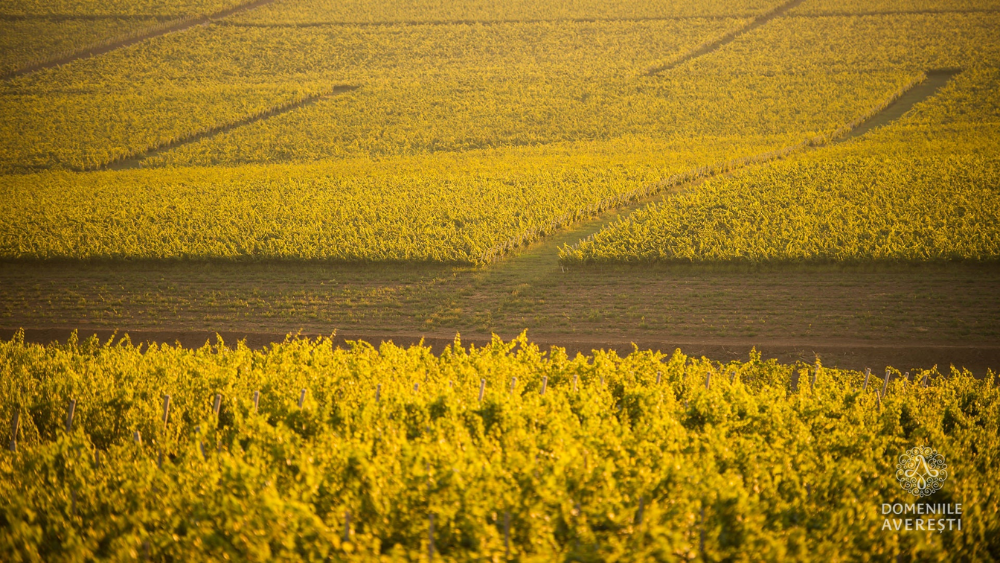The origin of Tămâioasa Românească, a distinguished Romanian grape variety used for producing high-quality white, sweet, and aromatic wines, is a subject of considerable debate.
Various studies have proposed different narratives regarding its discovery and origins.
Widely regarded as a native grape to Romania, this variety is known by several names in other regions: Muscat Frontignan Blanc in France and Tamianca in Bulgaria. Some sources suggest that the grape originated in the ancient Greek region of Elada and subsequently spread to various parts of Eastern and Western Europe.
Other studies posit that the Romans brought this grape to Dacia (modern-day Romania) approximately 2,000 years ago from the sunny south of Hellas (Greece), where it perfectly adapted to the local climatic conditions. Over time, this grape variety evolved and became known as Tămâioasa Românească.
Historical Journey and Cultivation
Having traversed the ancient trade routes and settlements of Greeks and Romans, Tămâioasa Românească found its enduring home in Romania. Today, this grape variety is cultivated over nearly 1,000 hectares of Romanian land, with significant vineyards in regions such as:
- Cotnari
- Huși
- Dealu Mare (Valea Călugărească, Urlați, Ceptura, Tohani, Merei, Zorești, and Breaza)
- Pietroasele
- Ștefănești, Argeș
- Dragășani
- Banu Mărăcine
- Segarcea
- Mehedinți (Severin, Corcova, Golul Drâncei, Vânju Mare, and Orevița)
- Murfatlar (Medgidia and Cernavodă)
- Banat at Cramele Recaș
These regions offer the unique terroir necessary for the grape’s optimal growth and flavor development.
Grape Production and Characteristics
Tămâioasa Românească grapes are renowned for their modest production yields, typically ranging from 8,000 to 10,000 kg per hectare. However, during the overripe process, the yield can decrease to between 4,000 and 6,000 kg per hectare. This reduction enhances the concentration of sugars, often reaching 240-250 grams per liter and occasionally soaring to 270-300 grams per liter in favorable years.
The wines produced from Tămâioasa Românească are celebrated for their distinct characteristics. These grapes are rich in flavor and contain significant levels of terpenic alcohol, contributing to the strong, characteristic flavor and aroma of the wines. The wines exhibit a golden yellow to amber color, with a rich aromatic profile dominated by linden flowers and acacia. This aromatic intensity offers remarkable gustatory-olfactory persistence.
Wine Profile and Aging
Tămâioasa Românească wines typically have an alcohol content of 12% to 12.5%. In their younger state, these wines do not fully exhibit their remarkable characteristics and are best enjoyed when fully matured. During aging, the wines’ flavors evolve, developing honeycomb notes that enhance their complexity. The aromatic intensity of these wines is preserved for up to 7-8 years, after which it gradually diminishes, giving way to subtle honey-like scents.
These wines are inherently sweet, often enjoyed as dessert wines or even as a dessert substitute.
Wine Tasting
We’ve chosen wines that represent unique expressions of Romanian viticulture, showcasing the rich heritage and diverse terroirs of the regions, Husi and Banat, Eastern and Western Romania. These wines offer a harmonious balance of complex aromas and flavors, providing an exceptional tasting experience that highlights the nuanced sweetness, vibrant acidity, and aromatic depth characteristic of high-quality Romanian wines.
- Cramele Recas, Regno Recaș Tămâioasă Românească is a beautifully balanced wine. On the nose, there are a predominant “honey” aroma of lindens, wildflowers, and yellow-fleshed fruits. The initial scent of linden flowers offers a sweet, floral essence that is both delicate and enchanting. On the palate, it distinguishes itself with a remarkable balance between freshness and sweetness. The initial taste is lively and refreshing, immediately highlighting the wine’s very good acidity.

- Domeniile Averesti, Tămâioasa Românească Clasic: The wine displays a deep, rich amber hue. The initial bouquet offers a lush and inviting array of aromas. Dominant notes of ripe melon greet the senses, exuding a sweet, fruity essence that is both refreshing and enticing. This is complemented by delicate hints of jasmine, adding a floral complexity. The taste is immediately pleasant and well-balanced, with a smooth entry that leads to a prolonged and satisfying finish. The flavors on the palate are rich and layered, starting with the sweet and mellow taste of ripe melon that was promised by the nose. The aftertaste is long and aromatic.

Food Pairing
The versatility of Tămâioasa Românească wines makes them an excellent pairing with various food items. They pair exceptionally well with Romanian delicacies such as:
- Soft, creamy cheeses such as Brie or Camembert, which will complement the wine’s sweetness and floral notes.
- Roasted nuts, particularly almonds or hazelnuts, to mirror the nutty undertones of the wine.
- Dishes featuring honey-glazed elements like honey-glazed ham or roasted root vegetables with a honey drizzle, to echo the wine’s polyfloral honey nuances.
- Light desserts such as almond biscotti or panna cotta with a floral honey drizzle, ensuring the wine’s flavors remain the star of the pairing.
These combinations enhance the tasting experience, making Tămâioasa Românească a delightful choice for various culinary settings.
Conclusion
Tămâioasa Românească is more than just a grape variety; it is a symbol of Romania's rich viticultural heritage. With its disputed origins, meticulous cultivation, and distinctive wine characteristics, Tămâioasa Românească stands out as a significant player in the world of fine wines. Whether enjoyed young for their vibrant aromas or aged for their nuanced complexity, these wines continue to captivate and charm wine enthusiasts worldwide.

